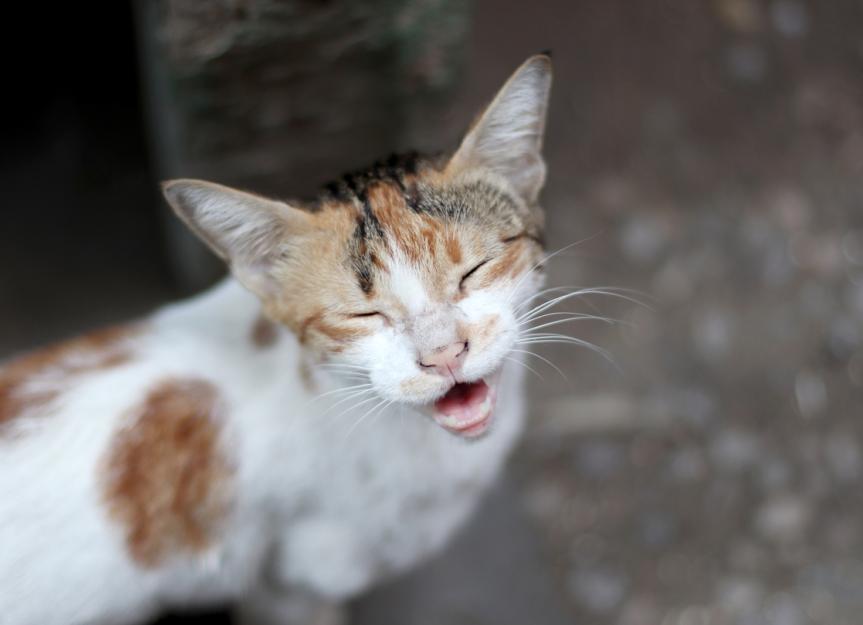Introduction:
Laryngeal paralysis in cats is a condition that can affect cats, causing breathing difficulties and other related issues. In this comprehensive article, we will explore the causes, symptoms, diagnosis, and treatment options for laryngeal paralysis in cats. Understanding this condition is essential for veterinarians and cat owners to provide appropriate care and improve the quality of life for affected feline companions.
Laryngeal paralysis is a condition that can affect cats, causing breathing difficulties and other related issues. Cats with laryngeal paralysis experience a dysfunction in the muscles that control the opening and closing of the larynx, or voice box. This can lead to narrowing or obstruction of the airway, resulting in breathing difficulties, voice changes, and other associated problems. Although laryngeal paralysis is more commonly seen in dogs, it can also occur in cats.
Causes and Risk Factors:
The exact cause of laryngeal paralysis in cats is not fully understood. However, certain factors may contribute to its development. These may include genetic predisposition, neuromuscular disorders, trauma to the larynx, or underlying medical conditions such as hypothyroidism or certain types of cancer. Older cats, particularly those over the age of 10, may be at a higher risk of developing laryngeal paralysis.
Recommended:
- Petco Review: The Power of Together
- PetSmart Review: Where Pets Inspire Us
- Hill’s Pet Nutrition Review: Pioneering Pet Health and Nutrition
- Royal Canine Review: Tailored Nutrition for Every Pet
- Chewy Review: Pet Care at Your Doorstep
Recognizing the Symptoms:
Cats with laryngeal paralysis may exhibit various symptoms, which can vary in severity. These can include noisy breathing, wheezing, coughing, voice changes, difficulty eating or swallowing, exercise intolerance, and respiratory distress. It is important for cat owners to be vigilant and seek veterinary attention if any of these symptoms are observed.
Diagnosing Laryngeal Paralysis:
Diagnosing laryngeal paralysis in cats requires a thorough veterinary examination and diagnostic tests. The veterinarian may perform a physical examination, including an evaluation of the cat’s breathing patterns and laryngeal function. Additional tests, such as laryngoscopy, radiographs, or advanced imaging techniques, may be conducted to confirm the diagnosis and assess the extent of the condition.
Treatment Options for Laryngeal Paralysis in Cats:
The treatment approach for laryngeal paralysis in cats focuses on managing the symptoms and improving the cat’s quality of life. Here are some common treatment options:
- Medical Management:
In mild cases, medical management may be sufficient to alleviate symptoms. Medications such as anti-inflammatories or bronchodilators may be prescribed to reduce inflammation, ease breathing, and manage associated conditions such as hypothyroidism or cancer.
- Surgical Intervention:
In more severe cases, surgical intervention may be necessary. The most common surgical procedure for laryngeal paralysis in cats is called arytenoid lateralization. This involves permanently opening one side of the larynx to improve airflow and reduce airway obstruction.
- Supportive Care:
Supportive care is essential for cats with laryngeal paralysis. This can include environmental modifications, such as providing a calm and stress-free living environment, avoiding exposure to extreme temperatures, and ensuring proper hydration and nutrition.
Preventing Complications:
While it may not be possible to prevent laryngeal paralysis, there are steps cat owners can take to minimize complications and improve their cat’s well-being. Regular veterinary check-ups, maintaining a healthy weight, and addressing any underlying medical conditions promptly can help reduce the risk and severity of laryngeal paralysis.
Conclusion:
Laryngeal paralysis in cats can present significant challenges and impact their quality of life. By understanding the causes, recognizing the symptoms, and exploring appropriate treatment options, veterinarians and cat owners can provide the necessary care and support for affected feline companions. Early detection, veterinary guidance, and a comprehensive treatment approach are key to managing this condition and ensuring the best possible outcome.
References:
- Brodbelt, D. C., & Fenn, J. (2010). Laryngeal paralysis in 125 cats: retrospective study of management and outcome of three different surgical techniques. Journal of Feline Medicine and Surgery, 12(3), 187-193.
- Fenn, J. (2015). Laryngeal paralysis in cats. Veterinary Clinics: Small Animal Practice, 45(6), 1133-1145.
- Flanders, J. A., & White, R. A. (2014). Laryngeal paralysis in cats: 12 cases (1997-2011). Journal of the American Veterinary Medical Association, 244(12), 1443-1447.
- Kyles, A. E. (2017). Laryngeal paralysis in cats. In Textbook of Veterinary Internal Medicine (8th ed., pp. 1762-1764). Elsevier.


